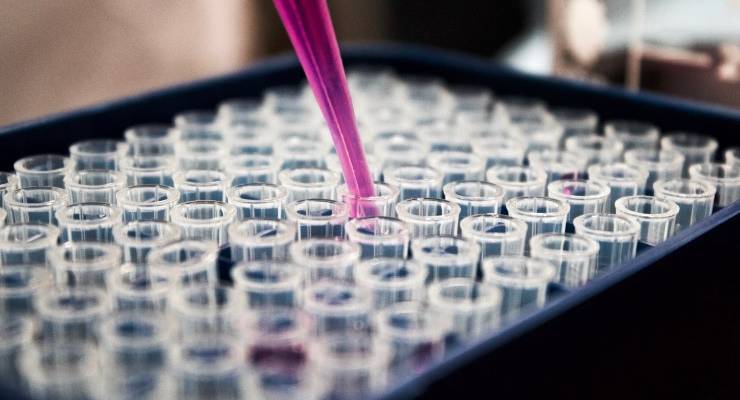
A slew of Australian research papers have recently been deemed utterly unreliable.
In the science community, research found in hundreds of papers had accuracy and plagiarism issues. In politics, a 2015 paper co-authored by Liberal Senator James Paterson was found to have breached integrity standards. The young politician had copied and pasted content almost word-for-word from a document by the Australian Public Service Commission.
With universities facing increasing funding cuts there is little job security for researchers, and institutions are relying on internal processes to call out dodgy practices. With no regulatory body to oversee and investigate standards, calls for a “bad-science watchdog” have intensified.
Researchers struggle with security
Working in research is a tough gig. Researchers complain of lack of job security, low wages and limited career opportunities. One workforce survey found 83% of those working in medical research had considered leaving active research for another career option. Another found 55% of postdoctoral researchers considered moving overseas. This “brain drain” of qualified researchers, who have spent years studying in institutions partly funded by the government, represents a huge loss for the industry.
According to a government report on innovation, Australia lags behind our international competitors in how invested we are in innovation, as well as in the level of our ambition:
One reason is that there are few research jobs available in the private sector. In fact, less than one-in-three Australian scientists work in the industry. That’s half the OECD average of 60 per cent; in the US four of every five researchers are in the business sector.
Most of Australia’s scientists work in universities or publicly-funded research facilities. Heavily reliant on grants and government funding, changes to the budget and in the government leave researchers particularly vulnerable. Up to 80% of university staff are employed casually in tenuous positions.
Australian universities are struggling
Not only is there limited investment in innovation, university funding has slowed to a trickle too. A two-year freeze in commonwealth grant funding meant $2.2 billion was slashed from university budgets. This year, it was announced $3.9 billion of research infrastructure funding, which has been frozen since 2013, would be repurposed into a new Emergency Response Fund, instead of used for new facilities in the higher education sector as planned.
Research funding is well below the OECD standard and it’s showing: institutions have started to slip down global rankings lists, while 10% of university units of evaluation are considered below world standard.
To fund research, many universities have formed partnerships with multi-billion dollar conglomerates. The University of Sydney has turned to big pharma company Novo Nordisk; Melbourne University has paired with activewear company ASICS; and the Queensland University of Technology worked with petrochemical company Shell. These partnerships are often strategic and beneficial to students, but can present concerns over bias and ethics.
For example, University of Sydney was forced to issue a correction into a paper called The Australian Paradox, which incorrectly claimed sugar consumption had declined over the past 30 years and therefore couldn’t be responsible for the country’s diabetes and obesity crisis. One author had received funding from Coca-Cola.
Students are feeling the pressure too. As universities adopt a commercialised, performance-based model, students are treated as customers there to get a degree as a receipt. Institutions are facing a huge cheating scandal, further eroding academic standards.
Academia relies on self-regulation
Academia in Australia is fully self-regulated, with no independent monitoring body to check standards. This is rare — it’s uncommon for a country to not have some kind of external regulatory system in place.
Research is supposed to be guided by the Australian Code for the Responsible Conduct of Research, which outlines broad principles and responsibilities for researchers and institutions. Universities have to nominate research integrity advisers, and set up a research integrity office to oversee projects and manage complaints about the code. Naturally, this represents a pretty major conflict of interest, and complaints don’t always result in action. What university would want to damage its own reputation?
Complaints can be escalated to the Australian Research Integrity Committee, which reviews how a university handled possible breaches, as well as their integrity policies, conflicts of interest, and disciplinary policies. The Australian Research Council also examines research quality in an annual report — but of the hundreds of thousands of research outputs produced across the country, only a handful of units of evaluation are assessed.
It’s important to note that the majority of Australian scientific papers are considered world-standard. They’ve had conflicts of interests addressed, are peer-reviewed, can be replicated, use state-of-the-art equipment and are conducted by industry leaders. But when it goes wrong, bad science erodes trust in academia and undermines science. It adds fuel to the climate denialists debate and wreaks havoc on the industry’s reputation.
Australia has scores of regulatory bodies. It’s time to implement a bad science watchdog to protect our research standards, and raise investment into research and development to the level of our competitors.








ARIC can only consider appeals about process, and can’t consider the merits or substance of a case. Because the new Australian Code (operational July 2019) no longer requires independent investigations or reports of outcomes, there will no longer be any grounds for appeals to ARIC. The new Code mandates secrecy. It allows institutions to come up with their own definitions of research misconduct, or to even dispense with using the term. Elsewhere, things are moving in the opposite direction. The Govt in Sweden has taken over research fraud investigations, and in China the Ministry of Science and Technology has been given direct responsibility to investigate, punish and regulate cases of misconduct in the natural sciences. In the UK MPs have called for a new watchdog to monitor universities to ensure that allegations of malpractice are properly investigated. Over 20 European countries, the US and Canada have national bodies to provide oversight and so that concerns about research misconduct can be handled by independent, experienced investigators.
Pressure to publish, lack of research funds from government, short term grants, almost everything about the way we fund research in Australia in fact is behind this. You have to have something published to get the funding to do the research. We have forgotten the purpose of universities and it is not to be a job factory. Our companies could not give a rat’s about the national interest. We bullshit about service industries, but it is industry, agriculture, manufacturing and technology that drive the needs and we don’t care about them. So much expertise lost in renewables.
I had this conversation with my uncle once, admittedly by email. He might have known something, having been a Nobel Laureate and an expat who kept in touch with his origins and worked with the likes of Florey and James Lovelock in his younger days. He said we spent far too little and it was destroying our Science. When asked why he never came home (He went to Oxford in 1938 and never came back except to visit) he simply said there was nothing for him to do here.
As a nation, we are a stunning example of the Dunning Kruger effect (https://en.m.wikipedia.org/wiki/Dunning–Kruger_effect). We’re too stupid to know we are stupid. In fact, we thing we’re brilliant.
Can I provide some context to the numbers of ‘unreliable’ papers reported in the SMH article linked from the first paragraph? Those 250 papers represent 0.02% (1 in 5,000) of the 1.3 million Australian papers published over the past 20 years. The conclusion of the academic who has put out a press release to publicise his own research is that this is a number that many people would find unconscionably high! While it is true that the number is likely an underestimate of the number of unreliable papers, keep in mind also that in cases of genuine dishonesty, multiple of these papers can be attributed to single problematic researchers, which suggests that the problem is even less widespread than the 0.02% figure would suggest. Those 250 papers also include genuine mistakes, some major and some minor, as well as the rare cases of scientific fraud.
At a time when trust in science is already under threat from bombastic populist politicians who think that people are “sick of experts”, an article like this does genuine and unjust harm to the reputation of science.
And on a different note, the interpretation of the statistic that 55% of postdocs have considered moving overseas seems rather odd. In the university department I work at, the majority of postdocs and academics have come here from overseas. Every single Australian academic here (myself included) has spent time living and working overseas as well as in other parts of Australia. I have never seen this as an imposition or something I was forced into, rather it has always been part of the appeal of working in science – the ability to work in different environments and cultures. Ask any postdoc who has had the experience of working in Australia as well as the UK or the USA where they were paid and treated best, and I can tell you the answer will be Australia.
The Paterson plagiarism revelation also reveals what former APS Commissioner John Lloyd was doing providing APS data to the IPA. No wonder he was obliged to resign.